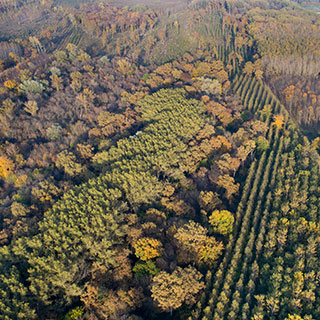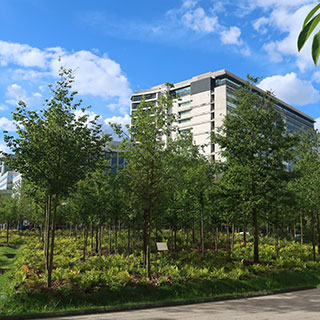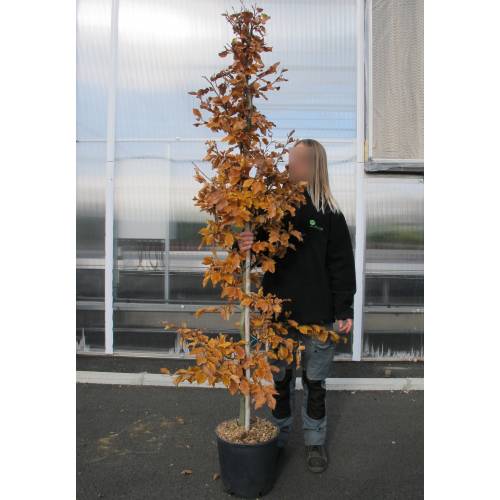
Plants
Beech, European / Fagus sylvatica
-
93.08 € European beech - Fagus sylvatica
2043jD - Available
-
87.88 € European beech - Fagus sylvatica
2043jE - Available
-
82.68 € European beech - Fagus sylvatica
2043QB - Available
-
72.28 € European beech - Fagus sylvatica
2043c - 1 item in stock
-
67.08 € European beech - Fagus sylvatica
2043M - Available
-
56.68 € European beech - Fagus sylvatica
2043M1 - Available
-
53.48 € European beech - Fagus sylvatica
2043M2 - Available
-
49.48 € European beech - Fagus sylvatica
2043M3 - Available
-
16.12 € European beech - Fagus sylvatica
2043E - Available
-
15.55 € European beech - Fagus sylvatica
2043f - Available
-
14.51 € European beech - Fagus sylvatica
2043F - Available
-
13.47 € European beech - Fagus sylvatica
2043j - Available
-
12.43 € European beech - Fagus sylvatica
2043jB - Available
-
11.39 € European beech - Fagus sylvatica
2043jC - Available
-
5.72 € European beech - Fagus sylvatica
2043J - Available
-
5.15 € European beech - Fagus sylvatica
2043Zz - Available
-
3.59 € European beech - Fagus sylvatica
2043K - Available
-
2.75 € Special Offer - 50%
2043JX - Available
-
2.55 € European beech - Fagus sylvatica
2043k - Available
-
2.03 € European beech - Fagus sylvatica
2043Z - Available
-
1.61 € European beech - Fagus sylvatica
2043X - Available
-
1.40 € European beech - Fagus sylvatica
2043W - Available
-
1.30 € European beech - Fagus sylvatica
2043V - Available
-
0.00 € European beech - Fagus sylvatica
2043P - Request for quotation
-
Area of origin: Europe except for Portugal.
Adult Dimensions: Height up to 30m (98.4'), width up to 20m (65.6').
Foliage: Deciduous.
Soil Type: All.
Hardiness: hardy to -20°C, prefers a wet atmosphere.
Exposure:Shade to full sun.
Properties and uses:
The foliage becomes bright yellow in autumn. Planted alone, in groups and in rows, this tree responds well to cutting and can be used to form a screening hedge. Bonsai enthusiasts use this species frequently. This is a very important tree in forestry. The wood is used in carpentry and cabinet making. The wood is also very combustible and is used to produce charcoal of an excellent quality. The edible fruits are called beechnuts, but can become toxic if eaten in quantity.
Plant, or reforest European Beech, Common Beech, Fagus sylvatica – Foresters Guide
1) The European Beech, Common Beech (Robinia pseudo-acacia) is it suitable for my land? The Common Beech is the typical variety of the rainy climates with a very wet atmosphere. It is the main genus of the montane zone with limits in altitude ranging from 1500 m in the Alps, to 1700 m in the Pyrenes and 1800 in Corsica.
In general, it is found where the average annual temperatures are between 7 and 10°C.
It resists winter frost but is sensitive to the coldest conditions. It can be sensitive to late frost, mainly if situated in certain plains where the burgeoning is early. It is also sensitive to spring drought but is generally able to recover after a hydric stress. The Common Beech grows in a wide range of soils, from poor in chemicals and acid soils, to carbonate and sometimes shallow soils. However, it doesn’t tolerate temporary or permanent water logging, or compact clayey soils where the roots are strongly limited.
2) Which planting density for my European Beech, Common Beech plot? (Fagus sylvatica)
The planting density is the number of plants planted in one hectare (acre). Here it means determining the initial number of young plants and to choosing their repartition in the available space.
The planting density is defined by the gaps in between the lines as well as the spacing in between each plant on a same line.
It is the basics of the silvicultural path which must lead to a final trees’ population of quality and to the fulfilment of the land’s owner set goals.
Advice: When choosing the density, think about the width of the tool which will allow the maintenance of the gaps in between the lines. The space in between the lines must allow clear passage for a tractor-drawn, maintenance tool.
For the Common Beech (Fagus Sylvatica):
- From 1200 to 2500 plants/hectare.
- As a side variety: from 800 to 1200 plants/hectare.
3) How to prepare the soil to plant European Beech, Common Beech (Fagus sylvatica)?
In Silviculture, working the soil is a key element in the success of planting. The root system of the tree must take rapidly where planted. Whether the work is done mechanically or manually, we recommend working the soil in its depth for optimum planting.
4) How to plant the European Beech, Common Beech (Fagus sylvatica)?
a- Receipt, storage and preparation of the plants before planting
- Upon receipt, place the crates side by side, on a flat surface so as there is no air circulation underneath. Choose a shady spot protected from wind;
- Maintain a good humidity level of the plants on the crates placed on the edges,
- Plan for the possibility of watering if planting is delayed or if the plants require water,
- In case of frost, do not handle the plants and if frost is forecasted for several days, place mulch on the edges.
b- Planting
Our team of professional planters use a planting cane to place the earth-balled plants in situ. This ergonomic, light tool allows quality, quicker planting work. It is also possible to carry out a traditional planting work using a pickaxe or a spade
In all case, you must:
- Dig a hole a little bit larger than the earth-ball ;
- Position it well in the hole;
- Cover it entirely;
Finally, the worker will tamp down the soil carefully with its foot. It is forbidden to press strongly or again to heel-butt the plant to avoid crushing the earth-ball and damage the root system of the plant.
Video on planting using a planting cane
Buy Planting cane
5) How to limit weeds on my European Beech, Common Beech plot (Fagus sylvatica) ?
During the first years, it is essential to eliminate all self-propagating plants. Not controlled they are going to be in competition with your plants and are going to deprive the young trees of the vital elements they require to grow (water, light and nutritional elements). You must therefore eliminate mechanically this unwanted competition until the trees are big enough to be able to dominate it.
Two types of operations are possible after planting:
Manual clearing around the plants
It is in fact acts often carried out using portable thermic Strimmers or billhooks to clear plants on a line or around the plants themselves.
Mechanical clearing of the space in between the lines
These actions are done using cutters and flail mowers, horizontal or vertical cutters, mounted on mini excavators or tractors. As a result, they cannot be undertaken outside the spaces available between the tree lines (seedlings or plants).
6) How to protect my young False Acacia plants from wildlife (Fagus sylvatica) ?
There is a necessity to protect the plot as soon as the population’s density of Cervidae (deer and roe deer in particular) risk leading to significant damage such as undergrowth of the plants or friction of the stems. Sometimes, the setting up of plants’ protection is also necessary as soon as the rodents’ population (rabbits, hares, coypu, voles...) are locally important.
3 types of protections are possible:
- Individual, mechanical Protections ( dissuasive netting, photo-degradable tubes,...)
- Protection by total wire-fencing of the plot,
- Protection by applying a repellent on each plant or on the borders of the plot.
Catalogue Protections against Game -
-

Alignment trees
66 products -

Beech Trees
5 products -

Current plants promotions
377 products -

Forest Tree Seedlings
53 products -

Mountain Gardens plants
194 products -

Plants for agroforestry
120 products -

Plants for urban micro-forests
65 products -

Shade trees
51 products -

Trees, Mature Trees
153 products -

Trees of Fall Interest
63 products -

Young plants for Bonsai
96 products
-













